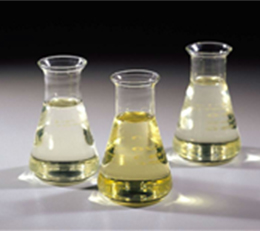OLEIC ACID
 Oleic acid is an unsaturated fatty acid found in nature in the form of glycerides in many vegetable oils and 30% animal fats. Oleic acid, which has two crystal structures, is the most important unsaturated fatty acid represented by the chemical formula C17H33COOH. The melting point of α-oleic acid is 16.3 degrees and the melting point of α-oleic acid is 13.4 degrees. There are double bonds between the ninth and tenth carbon atoms of the molecule. It is a pale yellow monounsaturated fatty acid with 18 carbon atoms from the Omega 9 series, which is sufficient in the cell membrane structure. It is a by-product of stearic acid production in the industrial sector. It is made from the liquid obtained under pressure from a fatty acid gel. It can be distilled at low pressure and emits a bitter taste under the influence of air. Oleic acid combines two hydrogen atoms and becomes stearic acid. It can be converted to eucalyptus acid with nitric acid.
Oleic acid is an unsaturated fatty acid found in nature in the form of glycerides in many vegetable oils and 30% animal fats. Oleic acid, which has two crystal structures, is the most important unsaturated fatty acid represented by the chemical formula C17H33COOH. The melting point of α-oleic acid is 16.3 degrees and the melting point of α-oleic acid is 13.4 degrees. There are double bonds between the ninth and tenth carbon atoms of the molecule. It is a pale yellow monounsaturated fatty acid with 18 carbon atoms from the Omega 9 series, which is sufficient in the cell membrane structure. It is a by-product of stearic acid production in the industrial sector. It is made from the liquid obtained under pressure from a fatty acid gel. It can be distilled at low pressure and emits a bitter taste under the influence of air. Oleic acid combines two hydrogen atoms and becomes stearic acid. It can be converted to eucalyptus acid with nitric acid.Water-insoluble fatty acids are sparingly soluble in alcohol and very soluble in ether and most organic solvents. Since it is an unsaturated fatty acid, it will cause an addition reaction. Add bromine to get the compound. The content of oleic acid in the composition of olive oil is 71-91%. It is also found in vegetable oils such as hazelnut oil and sunflower oil.
Fatty acids (or salts) are not as common in biological systems as they are. Instead, it is found as esters of fatty acids (such as oleic acid), which are fatty substances in many natural oils (usually triglycerides). Fatty acids can be obtained by saponification.






